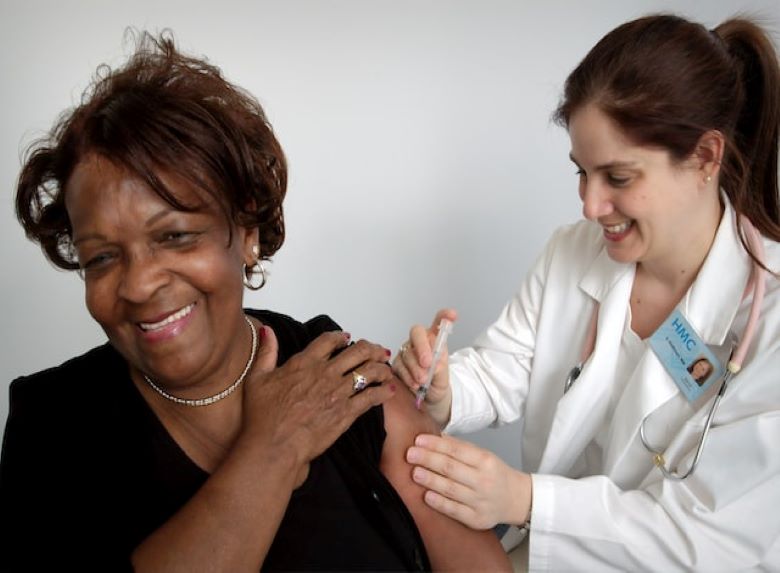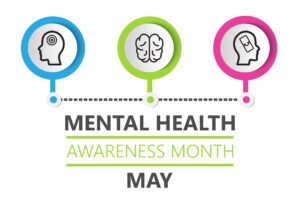With Pandemic Deaths Looming Large, the Age-Long Influenza Continues To Remain A Menace To Public Health
Two years of COVID-19 outbreak and with so much emphasis placed on dealing with the coronavirus, the menace of the age-old influenza or flu has likewise become more pervasive, unabated. Clearly, it is still as much a threat as ever, persistent, and equally deadly, yet preventable.
Influenza (flu) is a serious contagious disease that can lead to hospitalization and remains a common cause of death all over the world. According to CDC, flu activity was unusually low throughout the 2020-2021 flu season both in the United States and globally, despite high levels of testing. The low level of flu activity during this past season contributed to dramatically fewer flu illnesses, hospitalizations, and deaths compared with previous flu seasons.

The Centers for Disease Control estimated as many as 9 million flu illnesses, 4 million flu-related medical visits, 100,000 flu-related hospitalizations, and 5,000 flu deaths from October 2021 through June 2022. These estimates of hospitalizations and mortality show that despite the co-circulation of COVID-19 and other respiratory viruses, influenza viruses do still cause severe disease and death. U.S. officials are warning of a more typical flu season heading into this year’s winter months with millions likely catching the flu and hundreds of thousands requiring hospitalization.
In addition to this warning is the increasing worry about the twin threat of flu spreading along with COVID-19. Because the COVID-19 pandemic persists, it is more important than ever to do everything possible to reduce the spread of flu.
Take Steps to Help Prevent the Flu and COVID-19

According to the CDC, a seasonal flu vaccination is the best defense against the flu. Vaccine does not guarantee you will not get the flu but it will greatly improve your chances of avoiding the flu and reduce the severity if you do contract it.
The flu vaccine continues to be very safe and effective at keeping people out of hospitals, ICUs and even from dying as well as reducing the likelihood of passing influenza on to others who may be vulnerable. The chronically ill and the pregnant can benefit particularly.
Remaining up to date with your COVID-19 vaccinations and flu shots is also important in combatting respiratory illnesses that could lead to other health complications including bacterial pneumonia, ear infections, sinus infections and worsening of chronic medical conditions, such as congestive heart failure, asthma, or even diabetes.
The need for a new vaccination every year is because the body’s immunity to flu decreases with time, and because flu strains mutate and one this year may be replaced by an entirely different one next year.
There is no evidence that getting a flu vaccination increases one’s chances of getting COVID-19. There was a study linking vaccine with other coronaviruses, but it proved to be wrong.
If you are eligible per CDC guidelines, consider getting your COVID-19 booster or pneumococcal (pneumonia) vaccine, too, to protect against other respiratory illnesses and increase your chances of staying healthier this season.
Take Everyday Preventive Actions to Reduce the Spread of Illness

- Monitor for symptoms daily and stay home or avoid others when you are sick. For flu, CDC recommends that people stay home for at least 24 hours after their fever is gone except to get medical care or other necessities. Fever should be gone without the need to use a fever-reducing medicine. Note that the stay-at-home guidance for COVID-19 may be different.
- Wear a mask when flu or COVID-19 rates are high in your community. Find out mask recommendations for building sites and different locations.
- Avoid close contact with people who are sick.
- Cover your coughs and sneezes with your elbow or a tissue.
- Wash your hands often with soap and water. If soap and water are not available, use an alcohol-based hand rub.
- Avoid touching your eyes, nose and mouth.
- Clean and disinfect surfaces and objects that may be contaminated with viruses that cause flu or COVID-19 (e.g., cell phone, laptop, doorknobs, printers, shared areas in breakrooms and where meals are eaten, etc.).
- If you are experiencing symptoms, consider using a telemedicine visit to avoid time in a waiting room with other sick people. Flu symptoms include fever, cough, sore throat, runny or stuffy nose, body aches, headache, chills and fatigue. Some people also may have vomiting and diarrhea. People may be infected with flu and have respiratory symptoms without a fever.
- Consult with your provider and consider antivirals to lessen the severity and duration of the flu (also lowering your chance of spreading it to others).
Help Protect Your Family, Friends, Coworkers, and Others

You should get a flu vaccine before flu viruses begin spreading in your community, since it takes about two weeks after vaccination for antibodies to develop in the body and provide protection against flu. Make plans to get vaccinated early in fall before flu season begins.
CDC recommends that people get a flu vaccine by the end of October. However, getting vaccinated early (for example, in July or August) is likely to be associated with reduced protection against flu infection later in the flu season, particularly among older adults.
Make sure you are protecting yourself and others from the flu by practicing good health habits and getting your annual vaccination.
- This season, all flu vaccines will be designed to protect against the four flu viruses research indicates will be most common
- Everyone 6 months and older should get an annual flu vaccine, ideally by the end of October.
- Vaccination of people at higher risk of developing serious flu complications is especially important to decrease their risk of severe flu illness.
- People at higher risk of serious flu complications include young children, pregnant people, people with certain chronic health conditions like asthma, diabetes or heart and lung disease, and people 65 years and older.
- Vaccination also is important for health care workers, and other people who live with or care for people at higher risk to keep from spreading flu to them.
- Children younger than 6 months are at higher risk of serious flu illness but are too young to be vaccinated. People who care for infants should be vaccinated instead.
Flu vs. Cold
Only a doctor can diagnose whether a person has a cold, pneumonia, or the flu. But it is important for you to know some of the basics so that you can watch out during the flu season.
- Most colds some on slowly while the flu usually comes on suddenly.
- Colds usually start with a runny nose and sneezing and end up with a sore throat or cough. Most colds do NOT cause a high fever. People who have flu often feel some or all of these symptoms: fever or feeling feverish/chills, cough, sore throat, runny or stuffy nose, muscle or body aches, headaches, fatigue (tiredness). Some people may have vomiting and diarrhea, though this is more common in children than adults. It is important to note that not everyone with flu will have a fever.
- The common cold and the flu are caused by viruses, nonetheless, the flu is much more severe. All the symptoms seem to come on at once: fever, chills, headache, and muscle aches. The fever is often higher than 101 degrees F.
- Complications from a cold are usually minor, but complications from influenza can be life threatening.
- Pneumonia can follow a cold or the flu and causes a sudden worsening of symptoms. Usually, there is a high fever, and a cough that brings up yellow, green, or rust colored sputum.
- Although COVID-19 has several possible symptoms, high fever, cough and difficulty breathing appear to be most common.
How Flu Spreads

Most experts believe that flu viruses are spread through the air mainly by tiny droplets made when people with flu cough, sneeze or talk. These droplets are carried in the air to nearby people and objects. Less often, a person might get flu by touching a surface or object that has flu virus on it and then touching their own mouth, nose or possibly their eyes.
You may be able to spread flu to someone else before you know you are sick, as well as while you are sick.
People with flu are most contagious in the first three to four days after their illness begins. Some otherwise healthy adults may be able to infect others beginning one day before symptoms develop and up to five to seven days after becoming sick. Some people, especially young children and people with weakened immune systems, might be able to infect others for an even longer time.
The time from when a person is exposed and infected with flu to when symptoms begin is about two days but can range from about one to four days.
Studies have shown that stress also increases the risk of infection and influenza-like illness. Keeping your stress level low means you are helping your body stary strong.
Treating the Flu

According to CDC, influenza antiviral drugs may be a treatment option, if you get sick with the flu. It should be noted that antiviral drugs are different from antibiotics. Flu antivirals are prescription medicines and are not available over the counter. Follow your doctor’s instructions for taking these drugs.
Antiviral drugs can make illness milder and shorten the time you are sick especially if you are at higher risk of serious flu complications and you get flu symptoms. People at higher risk of flu complications include young children, adults 65 years of age and older, pregnant people, and people with certain medical conditions such as asthma, diabetes, and heart disease.
Studies show that when treatment is started within 1-2 days after flu symptoms begin, influenza antiviral drugs can lessen symptoms and shorten the time you are sick by 1 or 2 days. They might also prevent some flu complications, like pneumonia. For people at higher risk of serious flu complications, treatment with influenza antiviral drugs can mean the difference between milder or more serious illness possibly resulting in a hospital stay.
Vaccine Availability
Flu vaccines today are widely available in most doctors’ offices, health departments, pharmacies, clinics and at some workplaces, schools and public health fairs.
Medicare and most commercial and private insurance pay for the vaccinations.









